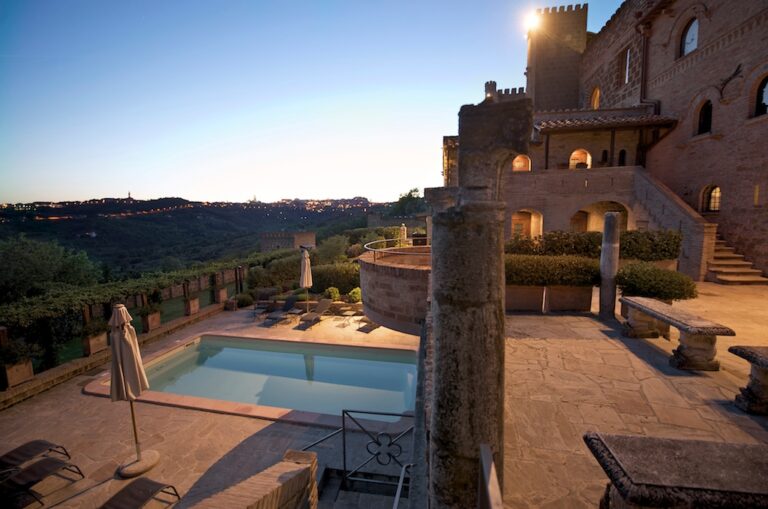Assisi Cathedral: A Historic Umbrian Romanesque Church in Italy
Visitor Information
Google Rating: 4.7
Popularity: Medium
Google Maps: View on Google Maps
Official Website: www.assisimuseodiocesano.it
Country: Italy
Civilization: Medieval European, Roman
Remains: Religious
History
Assisi Cathedral, also known as the Cathedral of San Rufino, stands in the city of Assisi, located in the province of Perugia, Umbria, Italy. The site occupies a square that was originally a Roman terrace, possibly the forum of the ancient city Asisium, though no direct evidence confirms this. Medieval historians believed the location once held a Roman temple dedicated to Bona Mater, the Good Mother goddess. By the early 5th century, a basilica housing the remains of Saint Rufinus, the city’s patron saint, was established here, as noted by Saint Pier Damiani.
In the 8th century, the first foundations of the current church were likely laid. During the 11th century, Bishop Ugone sought to move Saint Rufinus’s relics to the cathedral of Santa Maria Maggiore. However, the citizens of Assisi opposed this, successfully keeping the relics in their original church. Bishop Ugone also rebuilt the church on a larger scale and, in 1036, elevated it to cathedral status.
A significant reconstruction began in 1140 under architect Giovanni da Gubbio and continued for several decades. By 1210, the local government, which used the church courtyard for meetings, urged the completion of the building due to ongoing factional conflicts linked to its unfinished state. The main altar was consecrated by Pope Gregory IX in 1228, the same year Saint Francis of Assisi was canonized in this cathedral. The entire church was finally consecrated by Pope Innocent IV in 1253.
In 1571, the interior underwent a major restructuring led by architect Galeazzo Alessi, which gave the cathedral much of its present appearance. The cathedral also holds historical significance as a preaching site of Saint Francis. Nearby, the diocesan museum and Capitular Archive preserve illuminated manuscripts and documents dating back to 963, reflecting the cathedral’s long-standing religious and administrative role.
Remains
The cathedral is built in the Umbrian Romanesque style, with a façade dating mainly to the 12th century. The lower part features three portals adorned with sculpted lions and griffins. The central portal is richly decorated with multiple archivolts, arched bands above the doorway, featuring reliefs of branches, spirals, allegorical figures, and mythical animals. Above this portal, a lunette shows Christ enthroned within a circular frame, flanked by the sun, moon, the nursing Madonna, and Saint Rufinus. The side portals have lunettes depicting symbolic scenes: two birds drinking from a fountain representing Christian souls receiving divine grace, and two lions surrounding a vase.
A horizontal band above the portals displays animal figures and corbels carved with human and animal heads. Above this runs a gallery with four animal sculptures. The central façade area contains three ornate rose windows surrounded by corbels with high reliefs. Around the central rose window are the symbols of the four Evangelists and three supporting telamons, sculpted male figures acting as columns. The upper façade, dating to the late 13th century, is crowned by a triangular gable with a Gothic arch, likely intended to hold a painting or mosaic.
To the left of the façade rises a Romanesque bell tower from Bishop Ugone’s time, decorated with double bifora windows—paired arched openings. The interior follows a basilica plan with three naves separated by pillars. The current interior appearance dates from the 1571 renovation, though traces of the earlier church remain visible above the vaults, including parts of a dome. During restoration, parts of a Roman-era wall were uncovered on the left side.
Inside, the cathedral contains ten minor altars alternating with statues of prophets sculpted by Agostino Silva in 1672. Near the central portal stand two marble statues: Saint Francis by Giovanni Dupré (1882) and Saint Clare by Amalia Dupré (1888). The first bay houses an ancient marble baptismal font where Saint Francis, Saint Clare, Saint Gabriel of Our Lady of Sorrows, and possibly Emperor Frederick II were baptized. This font was decorated in 1882 with wooden sculptures representing allegories linked to the four Evangelists and a shell symbolizing earthly pilgrimage.
Several chapels within the cathedral are dedicated to various saints and themes, each featuring distinctive architectural elements such as columns, pilasters, tympana, and stucco allegories. Notable artworks include paintings by Berto di Giovanni, Dono Doni, and Francesco Appiani. The choir stalls along the apse walls are 16th-century wooden carvings by Piergiacomo da Sanseverino. The large organ in the apse, built in 1841 by Antonio and Francesco Martinelli, has 33 registers and is housed in a wooden case painted to imitate marble. Two additional organs include a choir organ from 1971 and a 1645 organ in the Chapel of the Holy Sacrament, likely by Tommaso Campana.
The sacristy contains artworks by Cesare Sermei, Girolamo Marinelli, Giacomo Giorgetti, Martin Knoeller, and Baldassarre Orsini. A small door leads to the underground oratory of Saint Francis, where the saint rested before preaching. The crypt, divided into three naves, preserves fragments of 11th-century frescoes depicting Evangelist symbols and a 3rd-century Roman sarcophagus that once held Saint Rufinus’s remains. The saint’s relics are now kept under the altar opposite the congregation in a sarcophagus, while the original Roman sarcophagus remains visible in the crypt.
Foundations beneath the cathedral include remains of a Roman settlement and a cistern forming the base of the medieval bell tower, uncovered during recent restorations. Nearby, the Chapel of the Madonna del Pianto houses a 15th-century polychrome terracotta wooden copy of a Pietà by an unknown German sculptor. The original, reputed to have miraculously wept in 1494, was stolen in 1982. The Chapel of the Holy Sacrament, built in 1511 and refined in 1663, features paintings and frescoes on the Eucharist theme by Giovanni Andrea Carlone and others, representing the most unified Baroque decoration in Assisi. The cathedral’s interior decoration includes numerous stucco statues and reliefs by Agostino Silva and paintings by various artists, enriching its historical and artistic heritage.










